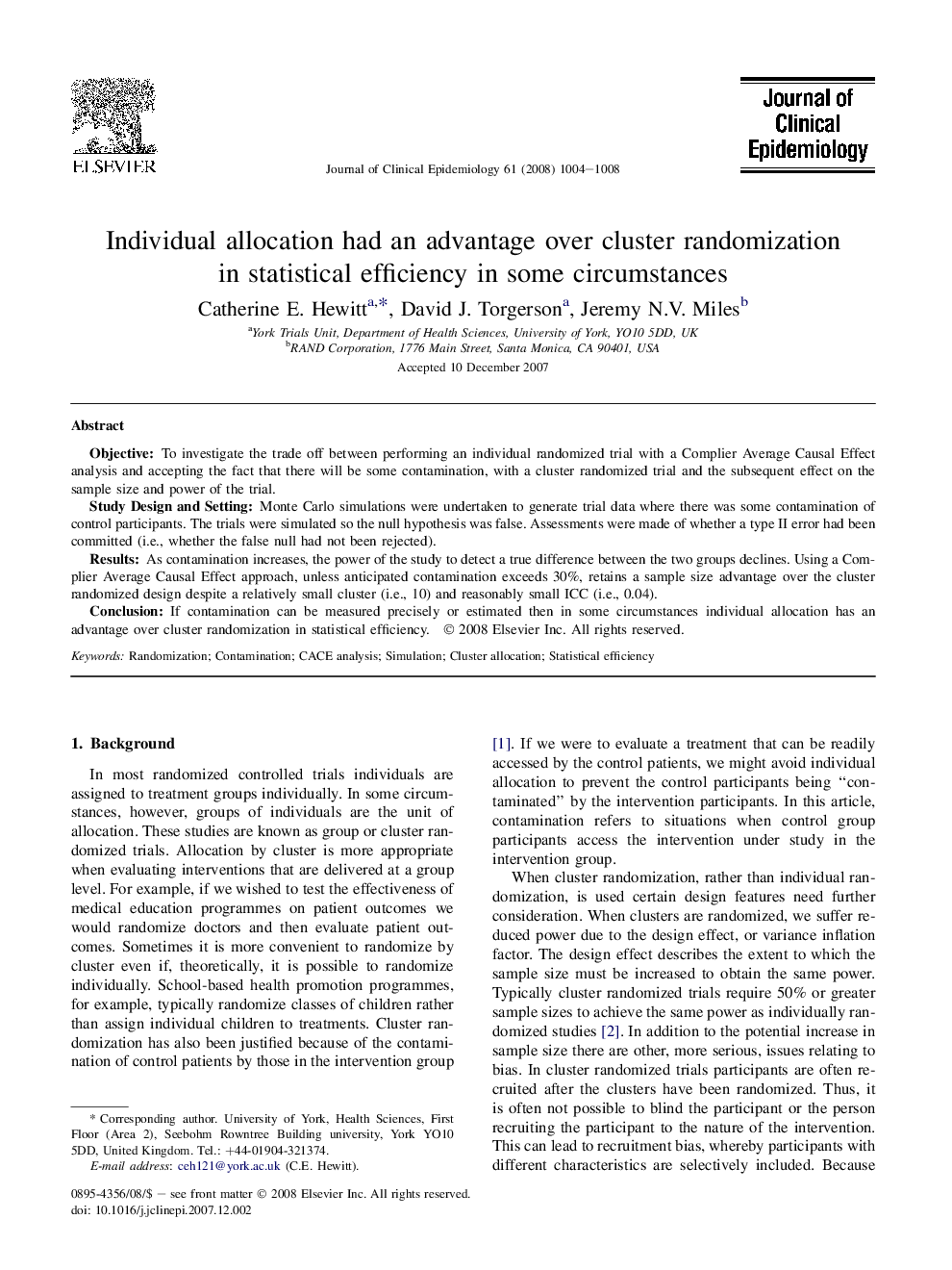| Article ID | Journal | Published Year | Pages | File Type |
|---|---|---|---|---|
| 1083789 | Journal of Clinical Epidemiology | 2008 | 5 Pages |
ObjectiveTo investigate the trade off between performing an individual randomized trial with a Complier Average Causal Effect analysis and accepting the fact that there will be some contamination, with a cluster randomized trial and the subsequent effect on the sample size and power of the trial.Study Design and SettingMonte Carlo simulations were undertaken to generate trial data where there was some contamination of control participants. The trials were simulated so the null hypothesis was false. Assessments were made of whether a type II error had been committed (i.e., whether the false null had not been rejected).ResultsAs contamination increases, the power of the study to detect a true difference between the two groups declines. Using a Complier Average Causal Effect approach, unless anticipated contamination exceeds 30%, retains a sample size advantage over the cluster randomized design despite a relatively small cluster (i.e., 10) and reasonably small ICC (i.e., 0.04).ConclusionIf contamination can be measured precisely or estimated then in some circumstances individual allocation has an advantage over cluster randomization in statistical efficiency.
